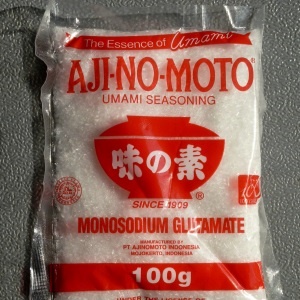
When I was working in the casualty department at Charing Cross Hospital in London years ago, we were always extra busy when the oyster season came around. We were close to many of the best restaurants in town, and as opening oysters was hazardous, the knife would slip and kitchen hands were regularly sent to me to sew up their wounds.
'Kwoks Quease'
Apart from that, though, one of the most interesting things that happened in those years was the notorious letter to a medical journal (The New England Journal of Medicine) from a Dr Kwok, describing a number of symptoms (numbness, headaches, weakness) he experienced after eating at Chinese restaurants. The good doctor suggested this was due to the rather large amounts of MSG (monosodium glutamate) used in Chinese food. The “disorder” was soon called “Kwok’s Quease”.
Read: MSG use can make you fat
Unexpectedly I was one of the first doctors in London to be confronted with a possible case. One evening I was called to see a man brought to us from a nearby Chinese restaurant, complaining of precisely the symptoms listed in the letter. At first it was feared he was experiencing a heart attack, though his tests did not confirm this. When I asked whether this might be related to MSG, the team enthusiastically decided it was a distinct possibility. As predicted, he made a full and fast recovery, perhaps aided by not receiving full-scale cardiac care.
Anyhow, the report caused widespread suspicion of MSG and Chinese food and restaurant menus began to boast that their food contained “No MSG”, as did food items at the supermarket, from chips to sauces.
Last year, the American Chemical Society, a group of researchers and other chemists, tried their best to convince us that MSG is entirely safe to eat. And, as a recent popular article stated: “If MSG is so bad for you, why doesn’t everybody in Asia have a headache?” Why are complaints about the ill-effects of MSG so noticeably absent from the parts of the world where it is so widely used?
Umami and MSG
Traditionally the basic tastes were supposed to be sweet, sour, bitter and salty, and every taste in the world was supposed to be based on these.
Read: Food is a multi-sensory experience
There was, however, a very important omission – a taste we all enjoyed and sometimes craved – umami, or the “savoury” taste. This is what helps us to enjoy meat, cheese, mushrooms, tomatoes etc. Umami receptors were at last identified early in the 2000s. Umami may identify when we’re eating protein, and may help us feel satisfied.
MSG was first isolated from seaweed in Japan in 1908. It has no flavour of its own, but increases the tongue’s experience of certain flavours, particularly that of umami. We actually produce glutamic acid within our own bodies while metabolizing food, with no significant difference from the sodium version we know as MSG.
Over the decades, since those early and highly influential reports which convinced so many people to mistrust MSG, no link has been found to the symptoms it supposedly causes. A very small number of people may have such symptoms if they consume ridiculously large amounts of MSG.
'Flavour enhancer'
Ignorant but arrogant food fascists have denounced MSG through recent generations, convincing many people that it is dangerous (or at least risky) and also a low-class and crude substitute for good food and cooking.
The U.S Food and Drug Administration has classified it as “generally recognized as safe”, and though it has remained in many foods (often under different names) I have found no recorded case of MSG causing specific damage to anyone’s health.
MSG is sold widely as a white powder under a range of brand names, which can be sprinkled into food while it’s cooked, or afterwards. At least in America, manufacturers must list it on the label if it is within a product, but they can get highly creative in calling it by other names, often including words like “hydrolyzed” or “autolyzed” vegetable protein, or yeast extract, or in forms like glutamate. It may even be lurking behind “natural flavour”, or “flavour enhancer”. In South Africa we know it in products like Oxo or Aromat.
Read: Boost the flavour of your food
You’ll find it not only in Chinese food, but also in various canned vegetables, soups and processed meats. It is popular because it enhances the flavours it accompanies. It’s very widely used in China where it has not had the worrying reputation it achieved in the West, and is often considered a vegetarian equivalent for meat stock. It also needs to be remembered that similar glutamates can also naturally occur in a range of foodstuffs, including meats, milk, cheese, and vegetables.
What symptoms is MSG supposed to cause?
Over the decades these have included headaches; flushing (especially of the face) with sweating; a sense of tightness or pressure in the face; numbness, tingling or a burning sensations in the head and neck or elsewhere; palpitations (fast heartbeat, perhaps with a sense of fluttering); chest pains; nausea; and general weakness. But let’s be clear, researchers have found no link between consuming MSG and any of these symptoms!
Read more:




 Publications
Publications
 Partners
Partners














